Traducción generada automáticamente
Mostrar original
Mostrar traducción
Salvador Dali - Don Quichotte - Original Lithograph Joseph FORET, Paris, 1957 PRINTER : Atelier Mourlot. - SIGNATURE : plate signed by Dali. - LIMITED : Total edition of 233 - PAPER : BFK Rives vellum. - SIZE : 17 x 14''. - REFERENCES : Field 57-1 / Michler & Lopsinger 1001-1012. - INFORMATIONS : First book illustrated by Dali, edited by the great editor J Foret. The lithographs was created by Dali with very complexe and surrealist methods. One of the most look for illustrated book by Dali with spectacular lithographs. - CONDITION : Excellent Salvador Dali Salvador Dali was born as the son of a prestigious notary in the small town of Figueras in Northern Spain. His talent as an artist showed at an early age and Salvador Felipe Jacinto Dali received his first drawing lessons when he was ten years old. His art teachers were a then well known Spanish impressionist painter, Ramon Pichot and later an art professor at the Municipal Drawing School. In 1923 his father bought his son his first printing press. Dali began to study art at the Royal Academy of Art in Madrid. He was expelled twice and never took the final examinations. His opinion was that he was more qualified than those who should have examined him. In 1928 Dali went to Paris where he met the Spanish painters Pablo Picasso and Joan Miro. He established himself as the principal figure of a group of surrealist artists grouped around Andre Breton, who was something like the theoretical ''schoolmaster'' of surrealism. Years later Breton turned away from Dali accusing him of support of fascism, excessive self-presentation and financial greediness. By 1929 Dali had found his personal style that should make him famous the world of the unconscious that is recalled during our dreams. The surrealist theory is based on the theories of the psychologist Dr. Sigmund Freud. Recurring images of burning giraffes and melting watches became the artist's surrealist trademarks. His great craftsmanship allowed him to execute his paintings in a nearly photo-realistic style. No wonder that the artist was a great admirer of the Italian Renaissance painter Raphael. Salvador Dali and Gala. Meeting Gala was the most important event in the artist's life and decisive for his future career. She was a Russian immigrant and ten years older than Dali. When he met her, she was married to Paul Eluard. Gala decided to stay with Dali. She became his companion, his muse, his sexual partner, his model in numerous art works and his business manager. For him she was everything. Most of all Gala was a stabilizing factor in his life. And she managed his success in the 1930s with exhibitions in Europe and the United States. Gala was legally divorced from her husband in 1932. In 1934 Dali and Gala were married in a civil ceremony in Paris and in 1958 in church after Gala's former husband had died in 1952. However from around 1965 on, the couple was seen less frequently together. But Gala continued to manage Dali's business affairs. 1933 Salvador Dali had his first one-man show in New York. One year later he visited the U.S. for the first time supported by a loan of US$500 from Pablo Picasso. To evade World War II, Dali chose the U.S.A. as his permanent residence in 1940. He had a series of spectacular exhibitions, among others a great retrospective at the Museum of Modern Art in New York. Besides creating a number of great paintings, Dali caused the attention of the media by playing the role of a surrealist clown. He made a lot of money and was contemptuously nicknamed Avida Dollars (greedy for dollars) by Andre Breton. Dali became the darling of the American High Society. Celebrities like Jack Warner or Helena Rubinstein gave him commissions for portraits. His art works became a popular trademark and besides painting he pursued other activities - jewelry and clothing designs for Coco Chanel or film making with Alfred Hitchcock. The Classic Period After World War II In 1948 Dali and Gala returned to Europe, spending most of their time either in their residence in Lligat or Spain or in Paris or France or in New York. Dali developed a lively interest in science, religion and history. He integrated things into his art that he had picked up from popular science magazines. Another source of inspiration were the great classical masters of painting like Raphael, Velasquez or the French painter Ingres. The artist commented his shift in style with the words: ''To be a surrealist forever is like spending your life painting nothing but eyes and noses.'' In 1958 the artist began his series of large sized history paintings. He painted one monumental painting every year during the summer months in Lligat. The most famous one, The Discovery of America by Christopher Columbus, can be seen at the Dali Museum in St. Petersburg in Florida. It is breath-taking. The artist's late art works combine more than ever his perfect and meticulous painting technique with his fantastic and limitless imaginations. Salvador Dali is the only known artist who had two museums dedicated exclusively to his works at lifetime. Dali Museum in St. Petersburg, Florida The Dali Museum in St. Petersburg in Florida or U.S.A. was founded in 1971 by the Dali collector A. Reynolds Morse and his wife Eleanor. The collection was first exhibited in a building adjacent to their home in Cleveland/Ohio. In 1982, the museum was moved to St. Petersburg in Florida. It hosts 95 oil paintings including six of Dali's eighteen large-sized historical paintings. Dali Museum-Theater in Figueres, Spain. The Dali Museum-Theater in Figueres, Spain was the former Municipal Theater of Figueres. In 1918, when Salvador Dali was only fourteen years old, it had shown his first public exhibition. Since 1970 the artist had dedicated his energy to transform the former Municipal Theater into a museum and art gallery. In 1974 the Theatro Museo Dali was officially opened. 1980 Dali was forced to retire due to palsy, a motor disorder, that caused a permanent trembling and weakness of his hands. He was not able to hold a brush any more. The fact that he could not follow his vocation and passion of painting and the news of Gala's death in 1982 left him with deep depressions. After Gala's death he moved to Pubol, a castle, he had bought and decorated for Gala. In 1984, when he was lying in bed, a fire broke out and he suffered sever burns. Two years later, a pacemaker had to be implanted. Towards the end of his life, Dali lived in the tower of his own museum where he died on January 23, 1989 from heart failure.
Salvador Dalí - Don Quichotte - Litografía original Joseph FORET, París, 1957 IMPRESIÓN : Atelier Mourlot. - FIRMA : placa firmada por Dalí. - LIMITADA : Edición total de 233 - PAPEL : vitela BFK Rives. - TAMAÑO : 17 x 14''. - REFERENCIAS : Campo 57-1 / Michler & Lopsinger 1001-1012. - INFORMACIONES : Primer libro ilustrado por Dalí, editado por el gran editor J Foret. Las litografías fueron realizadas por Dalí con métodos muy complejos y surrealistas. Uno de los libros ilustrados más buscados de Dalí con litografías espectaculares. - CONDICIÓN : Excelente Salvador Dalí Salvador Dalí nació como hijo de un prestigioso notario en la pequeña ciudad de Figueras en el norte de España. Su talento como artista se manifestó a una edad temprana y Salvador Felipe Jacinto Dalí recibió sus primeras lecciones de dibujo cuando tenía diez años. Sus profesores de arte fueron el entonces conocido pintor impresionista español Ramón Pichot y más tarde un profesor de arte de la Escuela Municipal de Dibujo. En 1923 su padre compró a su hijo su primera imprenta. Dalí comenzó a estudiar arte en la Real Academia de Arte de Madrid. Fue expulsado dos veces y nunca se presentó a los exámenes finales. Su opinión era que estaba más capacitado que los que debían examinarlo. En 1928, Dalí se fue a París, donde conoció a los pintores españoles Pablo Picasso y Joan Miró. Se estableció como la figura principal de un grupo de artistas surrealistas agrupados en torno a André Breton, que era algo así como el ''maestro'' teórico del surrealismo. Años más tarde, Breton se apartó de Dalí acusándole de apoyar el fascismo, de una excesiva autopresentación y de avaricia financiera. Hacia 1929, Dalí había encontrado su estilo personal que debía hacer famoso el mundo del inconsciente que se recuerda durante nuestros sueños. La teoría surrealista se basa en las teorías del psicólogo Dr. Sigmund Freud. Las imágenes recurrentes de jirafas ardiendo y relojes derritiéndose se convirtieron en las marcas surrealistas del artista. Su gran habilidad artesanal le permitía ejecutar sus cuadros con un estilo casi fotorrealista. No es de extrañar que el artista fuera un gran admirador del pintor renacentista italiano Rafael. Salvador Dalí y Gala. Conocer a Gala fue el acontecimiento más importante en la vida del artista y decisivo para su futura carrera. Era una inmigrante rusa y diez años mayor que Dalí. Cuando la conoció, ella estaba casada con Paul Eluard. Gala decidió quedarse con Dalí. Se convirtió en su compañera, su musa, su pareja sexual, su modelo en numerosas obras de arte y su directora de negocios. Para él lo era todo. Sobre todo, Gala fue un factor estabilizador en su vida. Y fue la gestora de su éxito en los años 30 con exposiciones en Europa y Estados Unidos. Gala se divorció legalmente de su marido en 1932. En 1934 Dalí y Gala se casaron por lo civil en París y en 1958 por la iglesia, tras la muerte del anterior marido de Gala en 1952. Sin embargo, a partir de 1965, la pareja fue vista con menos frecuencia. Sin embargo, Gala siguió gestionando los asuntos comerciales de Dalí. 1933 Salvador Dalí realiza su primera exposición individual en Nueva York. Un año más tarde, visita por primera vez Estados Unidos gracias a un préstamo de 500 dólares de Pablo Picasso. Para eludir la Segunda Guerra Mundial, Dalí eligió EE.UU. como residencia permanente en 1940. Realizó una serie de exposiciones espectaculares, entre otras una gran retrospectiva en el Museo de Arte Moderno de Nueva York. Además de crear una serie de grandes cuadros, Dalí llamó la atención de los medios de comunicación por su papel de payaso surrealista. Ganó mucho dinero y fue apodado despectivamente Avida Dollars (ávido de dólares) por André Breton. Dalí se convirtió en el favorito de la alta sociedad estadounidense. Celebridades como Jack Warner o Helena Rubinstein le encargaron retratos. Sus obras de arte se convirtieron en una marca popular y, además de pintar, se dedicó a otras actividades: diseños de joyas y ropa para Coco Chanel o rodaje de películas con Alfred Hitchcock. El periodo clásico después de la Segunda Guerra Mundial En 1948, Dalí y Gala regresaron a Europa y pasaron la mayor parte del tiempo en su residencia de Lligat o España, en París o Francia o en Nueva York. Dalí desarrolló un vivo interés por la ciencia, la religión y la historia. Integró en su arte cosas que había recogido de las revistas de divulgación científica. Otra fuente de inspiración fueron los grandes maestros clásicos de la pintura como Rafael, Velázquez o el pintor francés Ingres. El artista comentó su cambio de estilo con las siguientes palabras: ''Ser un surrealista para siempre es como pasarse la vida pintando sólo ojos y narices'' En 1958 el artista comenzó su serie de cuadros de historia de gran tamaño. Pintó un cuadro monumental cada año durante los meses de verano en Lligat. El más famoso, El descubrimiento de América por Cristóbal Colón, puede verse en el Museo Dalí de San Petersburgo, en Florida. Es impresionante. Las últimas obras del artista combinan más que nunca su perfecta y meticulosa técnica pictórica con su fantástica e ilimitada imaginación. Salvador Dalí es el único artista conocido que tuvo dos museos dedicados exclusivamente a sus obras en vida. El Museo Dalí de San Petersburgo, Florida El Museo Dalí de San Petersburgo, en Florida o Estados Unidos, fue fundado en 1971 por el coleccionista de Dalí A. Reynolds Morse y su esposa Eleanor. La colección se expuso por primera vez en un edificio adyacente a su casa en Cleveland/Ohio. En 1982, el museo se trasladó a San Petersburgo, en Florida. Alberga 95 óleos, incluidos seis de los dieciocho cuadros históricos de gran tamaño de Dalí. Museo-Teatro Dalí en Figueres, España. El Museo-Teatro Dalí de Figueres, España, era el antiguo Teatro Municipal de Figueres. En 1918, cuando Salvador Dalí tenía sólo catorce años, había mostrado su primera exposición pública. Desde 1970 el artista había dedicado su energía a transformar el antiguo Teatro Municipal en un museo y galería de arte. En 1974 se inauguró oficialmente el Teatro Museo Dalí. En 1980, Dalí se vio obligado a retirarse debido a una parálisis, un trastorno motor, que le provocaba un temblor y una debilidad permanentes en las manos. Ya no era capaz de sostener un pincel. El hecho de no poder seguir su vocación y pasión por la pintura y la noticia de la muerte de Gala en 1982 le provocaron una profunda depresión. Tras la muerte de Gala, se trasladó a Pubol, un castillo que había comprado y decorado para Gala. En 1984, cuando estaba en la cama, se produjo un incendio y sufrió graves quemaduras. Dos años más tarde, se le tuvo que implantar un marcapasos. Hacia el final de su vida, Dalí vivió en la torre de su propio museo, donde murió el 23 de enero de 1989 a causa de un fallo cardíaco.
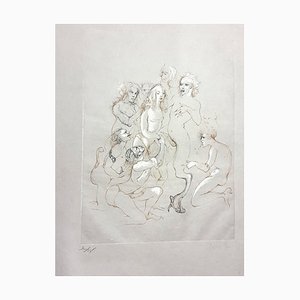

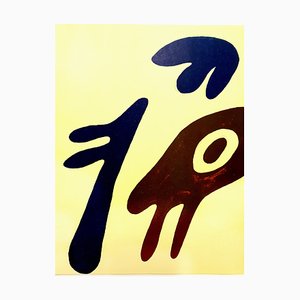
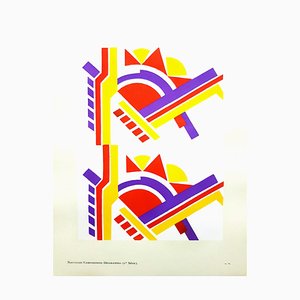
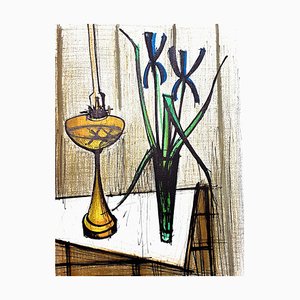
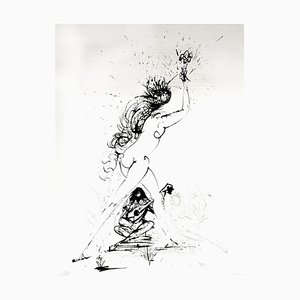

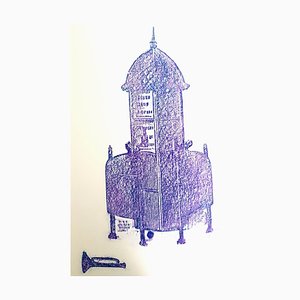
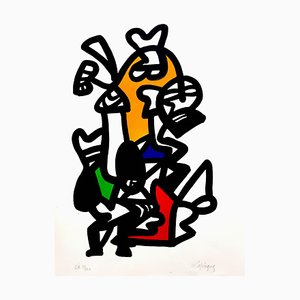
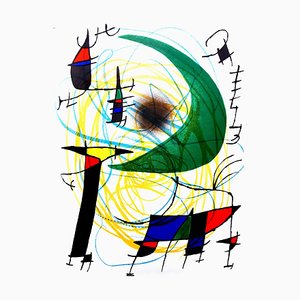
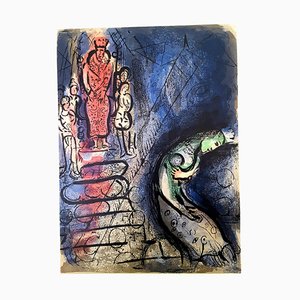

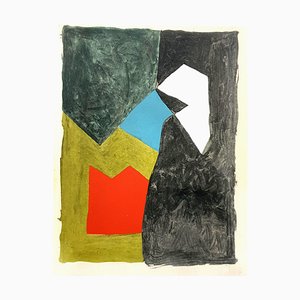
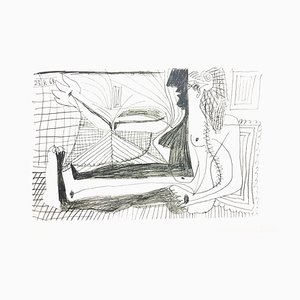
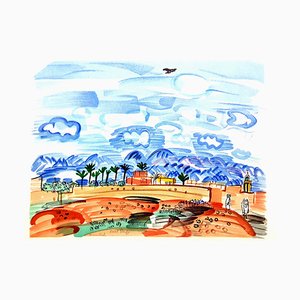
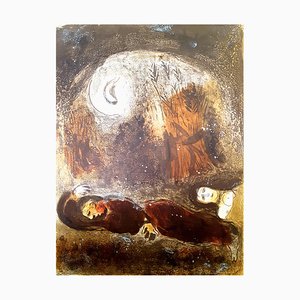
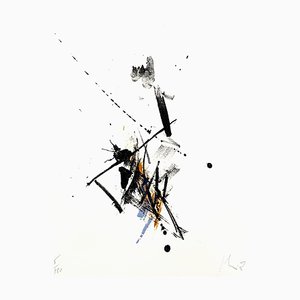
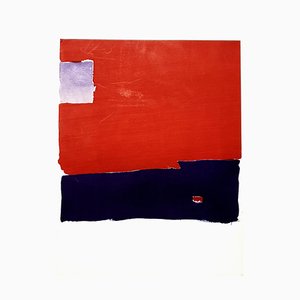
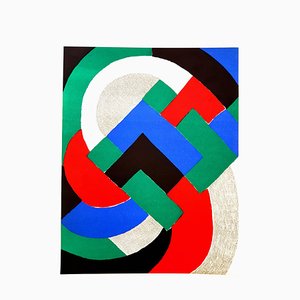
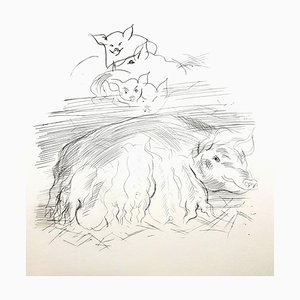
Contacta con nosotros
Haz una oferta
¡Hemos notado que eres nuevo en Pamono!
Por favor, acepta los Términos y condiciones y nuestra Política de privacidad
Contacta con nosotros
Haz una oferta
¡Ya casi está!
Para seguir la conversación en la plataforma, por favor completa el registro. Para proceder con tu oferta en la plataforma, por favor completa el registro.Exitoso
Gracias por tu consulta, alguien de nuestro equipo se pondrá en contacto contigo en breve.
Si eres profesional del diseño, por favor solicita aquí los beneficios del Programa comercial de Pamono